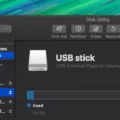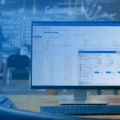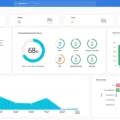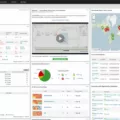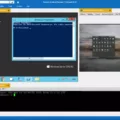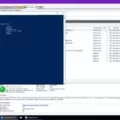Desktop management software is a powerful tool for keeping your computer systems safe and secure in a corporate or enterprise environment. With the right software, you can automate the entire desktop and mobile device management life cycle to cut IT costs, increase productivity, and reduce network vulnerabilities.
Desktop management software is designed to streamline the tasks of managing an organization’s computers and devices. It helps administrators keep track of hardware and software updates, security patches, system performance monitoring, user authentication and authorization, remote access management, and more.
Using desktop management software means that your organization can benefit from greater visibility over its computer systems. You no longer have to rely on manual processes to keep your desktops running smoothly – instead, you can assign roles and permissions to users with ease. This also helps ensure that only those with the necessary credentials are able to access sensitive data or perform risky operations.
In addition to improved security measures, desktop management software also allows organizations to save money by reducing manual labor costs associated with setting up and managing computers. Additionally, it can help maximize hardware utilization which further reduces costs associated with acquiring new systems or components.
Modern Desktop Management solutions such as Unified Endpoint Management (UEM) not only provide streamlined administration of desktops but also feature advanced features such as automated provisioning of new devices, app deployment across multiple platforms (including iOS), endpoint security measures such as encryption policies for confidential data storage on mobile devices, remote device tracking capabilities for lost or stolen laptops or phones, integrated antivirus protection for all connected devices, plus much more!
Overall desktop management software is an invaluable tool for any organization looking to increase its efficiency while protecting confidential information from malicious actors. Automating tedious manual processes associated with desktop setup and maintenance it allows IT teams to focus on more important tasks while ensuring that all connected devices remain secure and up-to-date at all times.
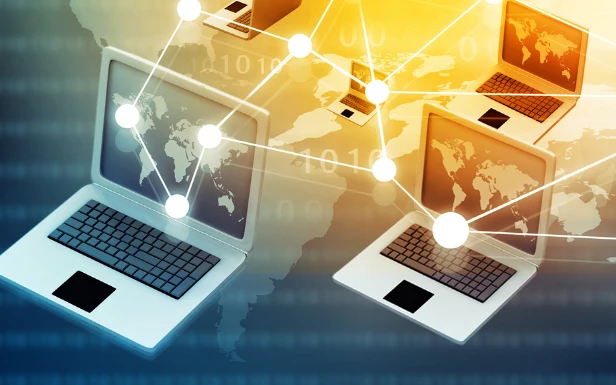
The Benefits of Desktop Management Software
Desktop management software is a comprehensive tool designed to oversee and secure all computer systems within an organization, such as desktops, laptops, and other computing devices. It provides users with the ability to manage and monitor their systems more effectively. This includes features such as installing applications, managing user accounts, setting up system configurations, managing security policies, applying security patches and updates, monitoring system performance and usage data, monitoring network connections and resources, enforcing data retention policies, and more. By using desktop management software, organizations can ensure that their IT infrastructure is secure from potential threats while also allowing them to maximize the efficiency of their computer systems.
Managing Desktop with ManageEngine
ManageEngine Desktop Central is a comprehensive desktop and mobile device management solution that enables businesses to manage their entire device life cycle from start to finish. It helps organizations reduce IT infrastructure costs, streamline operations, improve productivity, and protect networks against vulnerabilities. With Desktop Central, businesses can automate the deployment of software applications to desktops and mobile devices, configure settings for various operating systems and applications, monitor network performance and health, secure data from unauthorized access, deploy security patches remotely to managed devices, generate detailed reports on user activities for audit purposes, and much more. Desktop Central is designed for businesses of all sizes so that they can easily manage their entire fleet of devices with minimal effort.
Maintaining and Managing a Computer with Software
Utility software is a type of program that helps to maintain and manage a computer. It is designed to optimize and automate many of the processes involved in using a computer, such as a system maintenance, performance management, and security. Examples of utility programs include antivirus software, backup software, disk tools, file managers, system information programs, and system optimizers. Antivirus software helps protect your computer from malicious software such as viruses and spyware. Backup software helps to create copies of important data in case it is lost or damaged. Disk tools help manage hard drive space and keep it running smoothly. File managers can help organize files on your computer for easy access. System information programs provide detailed information about your computer’s hardware and software components. System optimizers can help speed up your computer by removing unnecessary files and repairing broken settings.
Modern Desktop Management: An Overview
Modern Desktop Management is a cloud-based solution that enables organizations to configure, manage, and secure all of their computer systems from a centralized location. It offers a unified endpoint management platform that helps organizations streamline their processes and reduce the amount of time and resources spent on device management. Modern Desktop Management solutions provide a comprehensive set of features including asset tracking, patch management, application deployment and configuration, policy enforcement, antivirus protection, user authentication and access control, remote troubleshooting, and support services. By leveraging these capabilities, organizations can improve the security of their IT infrastructure while also ensuring that devices are functioning optimally at all times. Additionally, they can also reduce operational costs as well as increase employee satisfaction by providing an intuitive user experience with convenient features such as self-service portals.
Understanding Desktop Database Management Systems
A desktop database management system is a type of software program that enables users to store, manipulate, and analyze data in a local environment. These programs are typically used for small-scale projects or activities, such as home budgeting or personal bookkeeping. Desktop database management systems are user-friendly, allowing users to quickly construct databases from scratch or pre-existing templates. Additionally, they provide users with powerful tools for sorting and searching data, creating reports and charts, and more.
Adding Computer Management to the Desktop
To put Computer Management on your desktop, you’ll need to open the Control Panel. Once the Control Panel is open, type ‘administrative’ in the top-right search box and choose Administrative Tools. Right-click Computer Management in the tools and select ‘Send to’, then choose Desktop (create shortcut) from the list. This will create a shortcut for Computer Management on your desktop, allowing you to access it quickly and easily.
Is the Desktop Window Manager Necessary?
Yes, DWM (Desktop Window Manager) is an essential Windows system component and is necessary for keeping the user interface of Windows up to date. It is responsible for drawing and displaying windows on the desktop and managing them. It also provides features like live taskbar thumbnails, high-resolution display support, desktop wallpaper, colorization effects, and glass window frames. Without DWM, your Windows experience would be incomplete and less efficient.
Conclusion
In conclusion, desktop management software is a comprehensive tool that enables businesses to streamline their IT infrastructure and operations, providing them with greater control over their computer networks. Desktop management software helps to automate the entire device management life cycle from start to finish, allowing businesses to reduce costs, increase productivity, and combat network vulnerabilities. Additionally, modern desktop management solutions such as Hexnode provide the added benefit of cloud-based deployment options which further enhance the ability of businesses to manage their computing resources.

